June 2008 Briefing Paper (FT)
advertisement
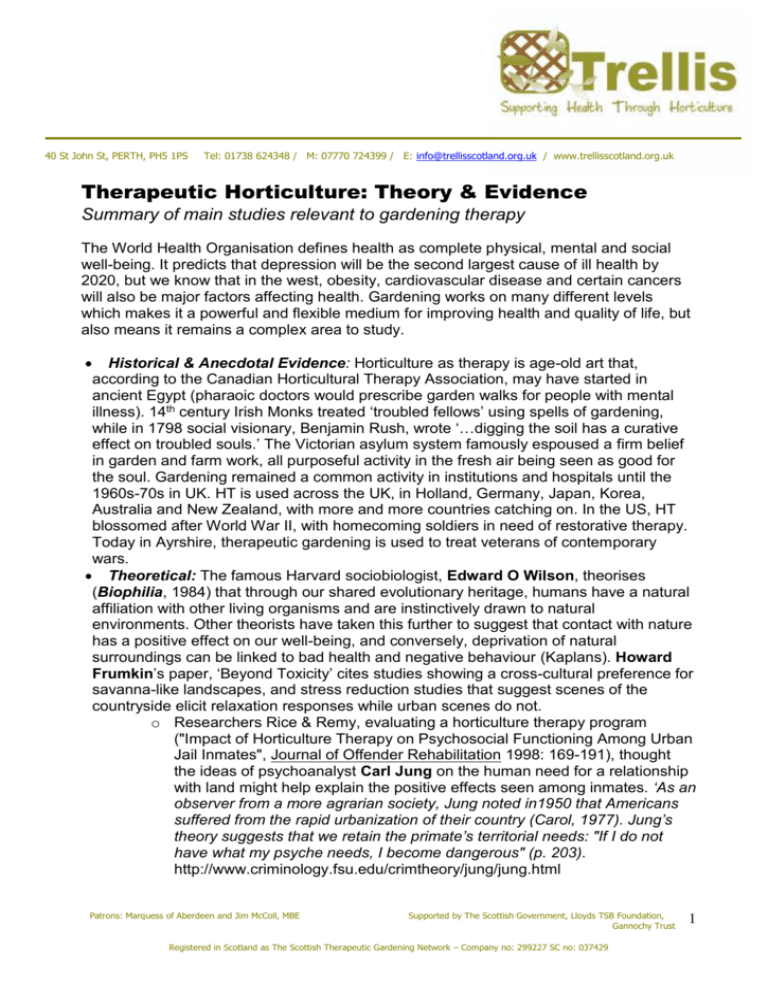
40 St John St, PERTH, PH5 1PS Tel: 01738 624348 / M: 07770 724399 / E: info@trellisscotland.org.uk / www.trellisscotland.org.uk Therapeutic Horticulture: Theory & Evidence Summary of main studies relevant to gardening therapy The World Health Organisation defines health as complete physical, mental and social well-being. It predicts that depression will be the second largest cause of ill health by 2020, but we know that in the west, obesity, cardiovascular disease and certain cancers will also be major factors affecting health. Gardening works on many different levels which makes it a powerful and flexible medium for improving health and quality of life, but also means it remains a complex area to study. Historical & Anecdotal Evidence: Horticulture as therapy is age-old art that, according to the Canadian Horticultural Therapy Association, may have started in ancient Egypt (pharaoic doctors would prescribe garden walks for people with mental illness). 14th century Irish Monks treated ‘troubled fellows’ using spells of gardening, while in 1798 social visionary, Benjamin Rush, wrote ‘…digging the soil has a curative effect on troubled souls.’ The Victorian asylum system famously espoused a firm belief in garden and farm work, all purposeful activity in the fresh air being seen as good for the soul. Gardening remained a common activity in institutions and hospitals until the 1960s-70s in UK. HT is used across the UK, in Holland, Germany, Japan, Korea, Australia and New Zealand, with more and more countries catching on. In the US, HT blossomed after World War II, with homecoming soldiers in need of restorative therapy. Today in Ayrshire, therapeutic gardening is used to treat veterans of contemporary wars. Theoretical: The famous Harvard sociobiologist, Edward O Wilson, theorises (Biophilia, 1984) that through our shared evolutionary heritage, humans have a natural affiliation with other living organisms and are instinctively drawn to natural environments. Other theorists have taken this further to suggest that contact with nature has a positive effect on our well-being, and conversely, deprivation of natural surroundings can be linked to bad health and negative behaviour (Kaplans). Howard Frumkin’s paper, ‘Beyond Toxicity’ cites studies showing a cross-cultural preference for savanna-like landscapes, and stress reduction studies that suggest scenes of the countryside elicit relaxation responses while urban scenes do not. o Researchers Rice & Remy, evaluating a horticulture therapy program ("Impact of Horticulture Therapy on Psychosocial Functioning Among Urban Jail Inmates", Journal of Offender Rehabilitation 1998: 169-191), thought the ideas of psychoanalyst Carl Jung on the human need for a relationship with land might help explain the positive effects seen among inmates. ‘As an observer from a more agrarian society, Jung noted in1950 that Americans suffered from the rapid urbanization of their country (Carol, 1977). Jung’s theory suggests that we retain the primate’s territorial needs: "If I do not have what my psyche needs, I become dangerous" (p. 203). http://www.criminology.fsu.edu/crimtheory/jung/jung.html Patrons: Marquess of Aberdeen and Jim McColl, MBE Supported by The Scottish Government, Lloyds TSB Foundation, Gannochy Trust Registered in Scotland as The Scottish Therapeutic Gardening Network – Company no: 299227 SC no: 037429 1 Natural Surroundings & Human Health: Dr William Bird's study for RSPB 'Natural Fit' finds that people exercising in natural outdoor environments got more out of it and sustained it better than those in gyms or other indoor settings. MIND promote ‘green’ exercise for mental health and cite a small study in this vein comparing a group with mental health problems who took a walk in a green park with another group who walked in a shopping centre. More people from the park group said they had elevated mood afterwards. http://www.mind.org.uk/Shopping/Openmind/Extracts/extract145.htm o Environmental psychologist, Rachel Kaplan has found that the most important factors in neighborhood satisfaction are the availability of trees, well-landscaped grounds and places for taking walks. o Dr Roger Ulrich found that post-surgical patients who had a view of a green scene from their hospital ward recovered faster than did patients with views to a brick wall. Those with views of nature also used fewer, less potent pain medications and had fewer negative evaluative comments in their nurses’ notes (Ulrich, 1984). Studies of student as well as patient groups suggest that simply viewing certain nature scenes can significantly ameliorate stress within five minutes or less. (Review of studies: Ulrich, 1999). Ulrich, Lunden, and Eltinge, 1993, found heart surgery patients exposed to a nature picture of water and trees experienced less anxiety and required fewer pain relief doses compared to patients assigned abstract pictures or no picture. Growing but limited research suggests that gardens in healthcare facilities (Marcus and Barnes, 1999) will tend to alleviate stress if they contain green or relatively verdant foliage, flowers, nonturbulent water, park-like qualities (grassy spaces with scattered trees), and compatible nature sound (birds, water, breezes) (Ulrich, 1999). o Pennsylvania State Jail Prisoners with views from their cells to the hills beyond the jail had 24% fewer sick-call visits than their counterparts with views to the prison courtyard. (Moore, E O (1981) Environmental Systems 11, 17–34). o In The Psychological Value of Trees, Herbert W. Schroeder reviews the literature and cites aesthetic and relaxation studies showing how trees affect our moods, emotions, and enjoyment. He believes this derives from our evolutionary past. The African savannah with its open sight lines, grassy ground plane, and scattered trees, reproduced in the modern public park, is an ideal environment of “prospect-refuge” where we can see without being seen and are most comfortable. (The Public Garden, January 1991, p. 1719). Biological/Physiological Studies : a "happy bug”, Mycobacterium vaccae, that occurs naturally in earth, could help treat depression and explain part of the ‘therapeutic effect’ of gardening. Bristol University scientists harvested the bug from soil before injecting it into mice, and it was found in another trial to improve cancer patients’ quality of life). A 2006 study also found mental health problems were lower in rural areas (British Journal of Psychiatry). In rural areas, the “friendly” bacteria is breathed in through dust and found on homegrown vegetables. Before major urbanisation and the advent of antibiotic household cleaning sprays, most people would have inhaled the bacteria naturally, or swallowed it through contact with soil or animals. Absence of the bacteria from our everyday lives may also help explain why conditions such as asthma Patrons: Marquess of Aberdeen and Jim McColl, MBE Supported by The Scottish Government, Lloyds TSB Foundation, Gannochy Trust Registered in Scotland as The Scottish Therapeutic Gardening Network – Company no: 299227 SC no: 037429 2 and allergies are increasing. It is believed that the bug helps to create the brain chemical, serotonin, a mood enhancer. This effect must be balanced with the possible negative effects of contact with soil e.g. E.Coli in manure (which can be life threatening) parasites and bacteria like tetanus. Exposure to sunlight has possible protective effects against cardiovascular illnesses (thought to be linked to Vitamin D metabolism, University of Dundee 2007), and some depression. It is also essential for bone health (Though there’s debate about safe levels as too much exposure can also bring increased risk of skin ageing, painful burns and blisters and even some cancers). Qualitative & Anedcotal Studies: Cathy Findlay - unpublished descriptive study of Carstairs patients, 2005-06 (from evaluation study of a voluntary sector grant project) – gardening credited with giving patients purpose, distraction from addictions and relaxation. Sempik et al (Loughborough University) studied 25 UK gardening projects and found qualitative and anecdotal evidence that horticulture improved health and wellbeing and helped build self-esteem and social links as well as improving concentration and reducing stress. For some projects, eg Astley Ainslie Hospital or Royal Edinburgh Hospital, evidence from patient records show rehabilitation leading to discharge from hospital after stroke, accident or having got through a depression has been achieved with gardening as part of their treatment programme. Unfortunately few efforts to gather this information into one database or document and publish it are known. o ‘Sustainable Communities? Nature Work and Mental Health’, 2005, Dr Hester Parr, University of Dundee. Volunteers use terms such as ‘therapeutic’, ‘calming’ and ‘focusing’ to describe gardening activities and developed confidence, self-esteem and basic skills. o At the Sloan-Kettering Institute in New York, women recovering from breast cancer surgery found that walks in the garden helped restore their ability to concentrate and focus their attention and it reduced their depression. Meta-analyses: Loughborough University - Centre for Family Studies literature review of some studies relating to therapeutic horticulture found common themes of improved mental well-being, fitness and stamina. Diane Relf of Virginia Tech has collated the most pertinent international studies on her site: http://www.hort.vt.edu/human/ther-res.html Gaps and questions: While many intriguing studies exist, there is still a lack of robust, large controlled studies based on quantitative as well as qualitative data. Longitudinal studies too are conspicuously absent from the literature. References: The Biophilia Hypothesis (A Shearwater Book) (Paperback) Publisher: Island Press; 1 edition (March 1, 1995), ISBN-10: 1559631473 ISBN-13: 978-1559631471 “View Through a Window May Influence Recovery from Surgery,” R Ulrich, Science, 1984. Overview of studies relating to nature views and natural surroundings in health care, by Ulrich: http://www.designandhealth.com/edu_res/Roger%20S.%20Ulrich%20p49.pdf Loughborough University Gardening Research and Information Network (GRAIN) http://www.lboro.ac.uk/research/ccfr/growing_together/growingtogetherliteraturereview.h tm Patrons: Marquess of Aberdeen and Jim McColl, MBE Supported by The Scottish Government, Lloyds TSB Foundation, Gannochy Trust Registered in Scotland as The Scottish Therapeutic Gardening Network – Company no: 299227 SC no: 037429 3
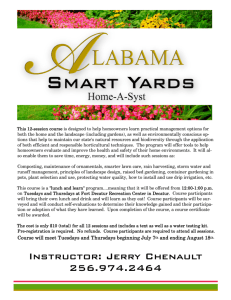
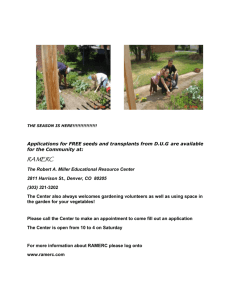
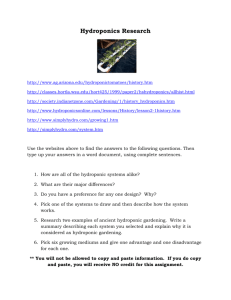


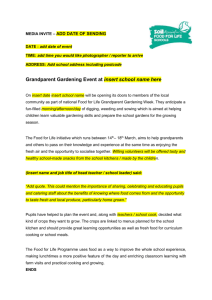
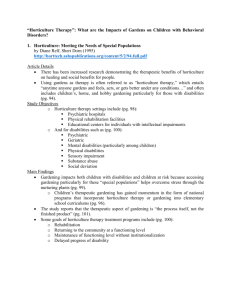
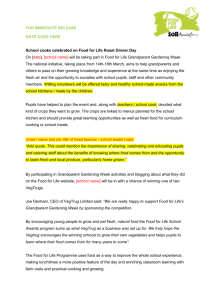
![Newsletter 26.04.13[1]](http://s3.studylib.net/store/data/006782410_1-da9f3895022a2272f47db633b66536f9-300x300.png)